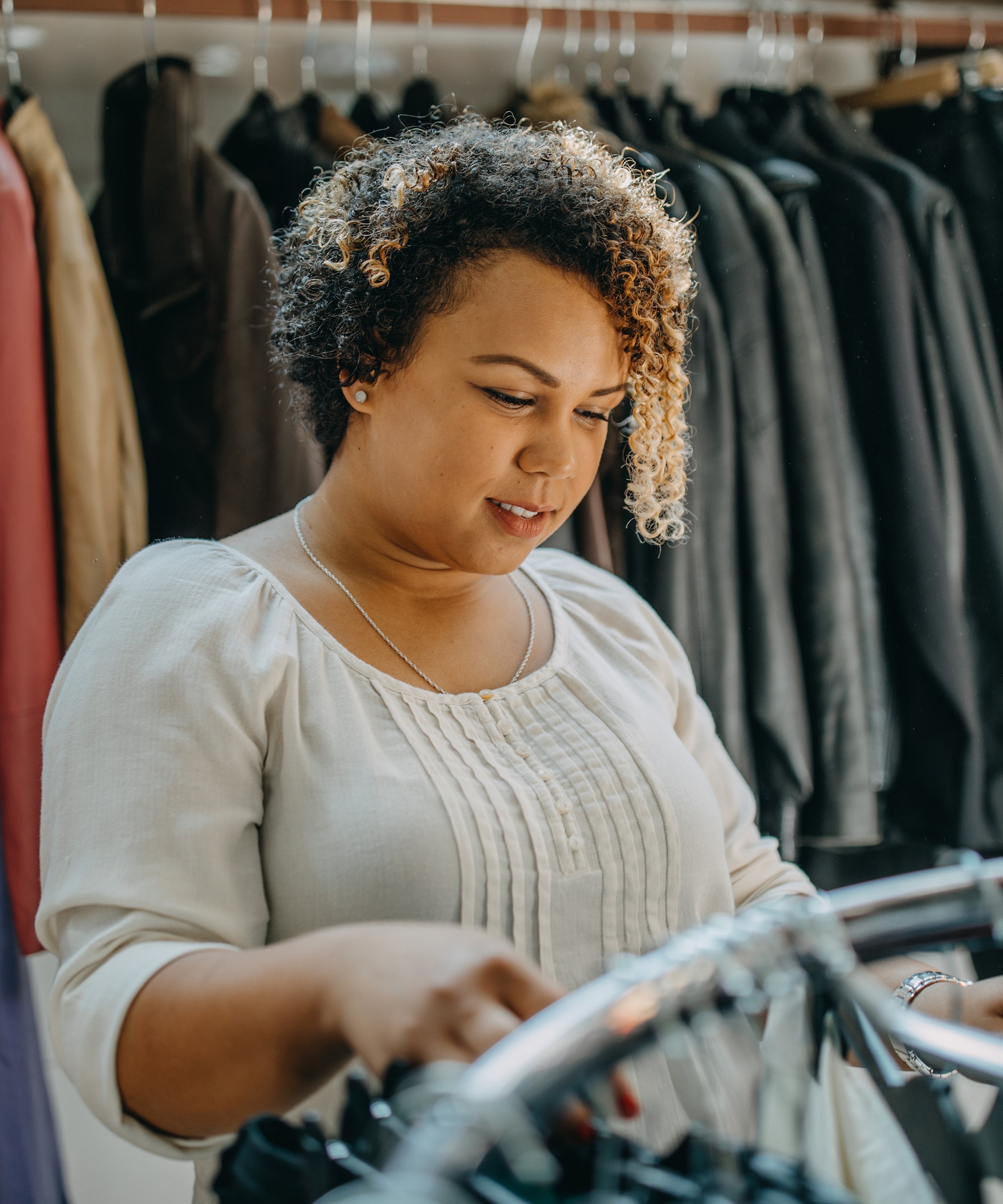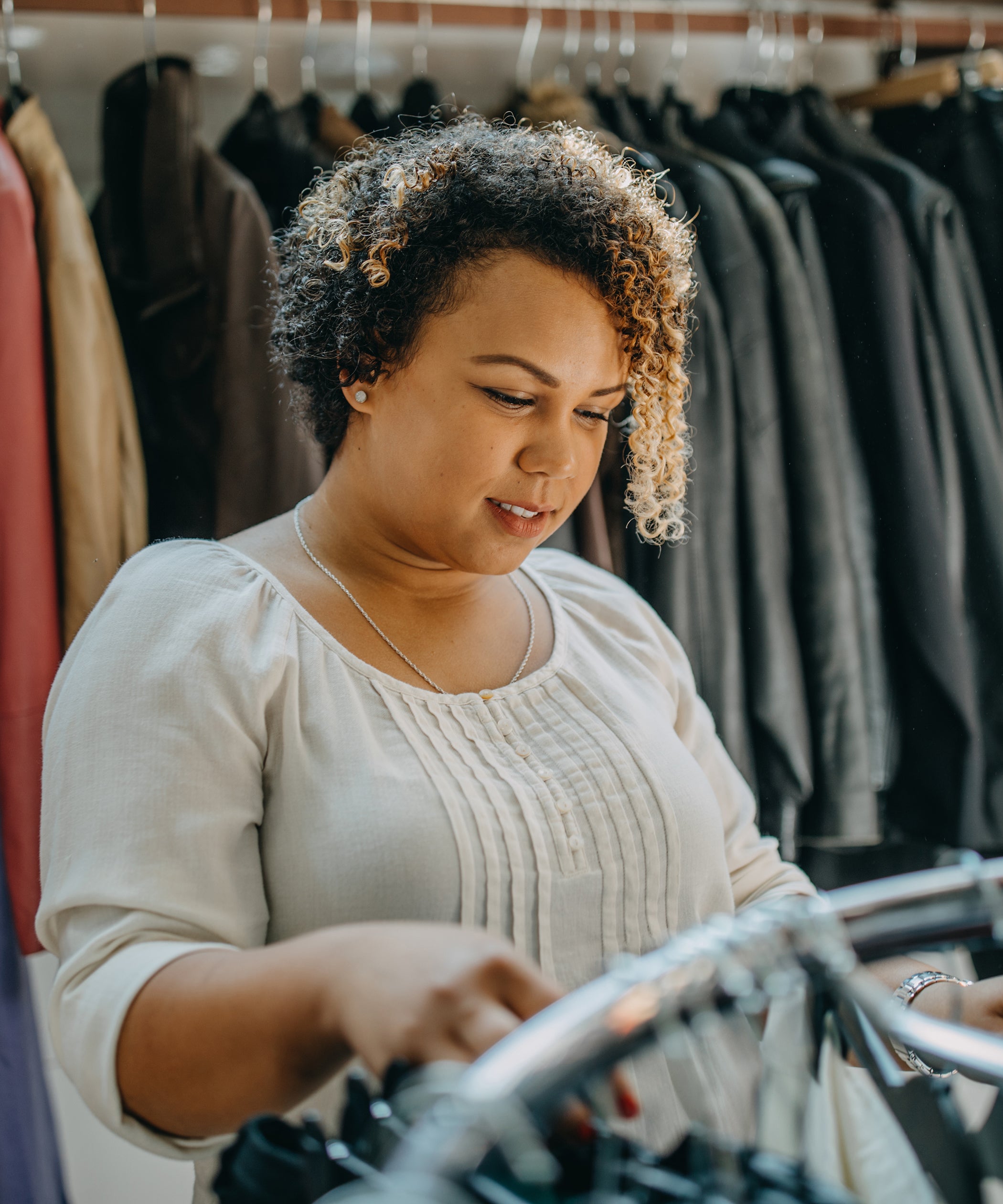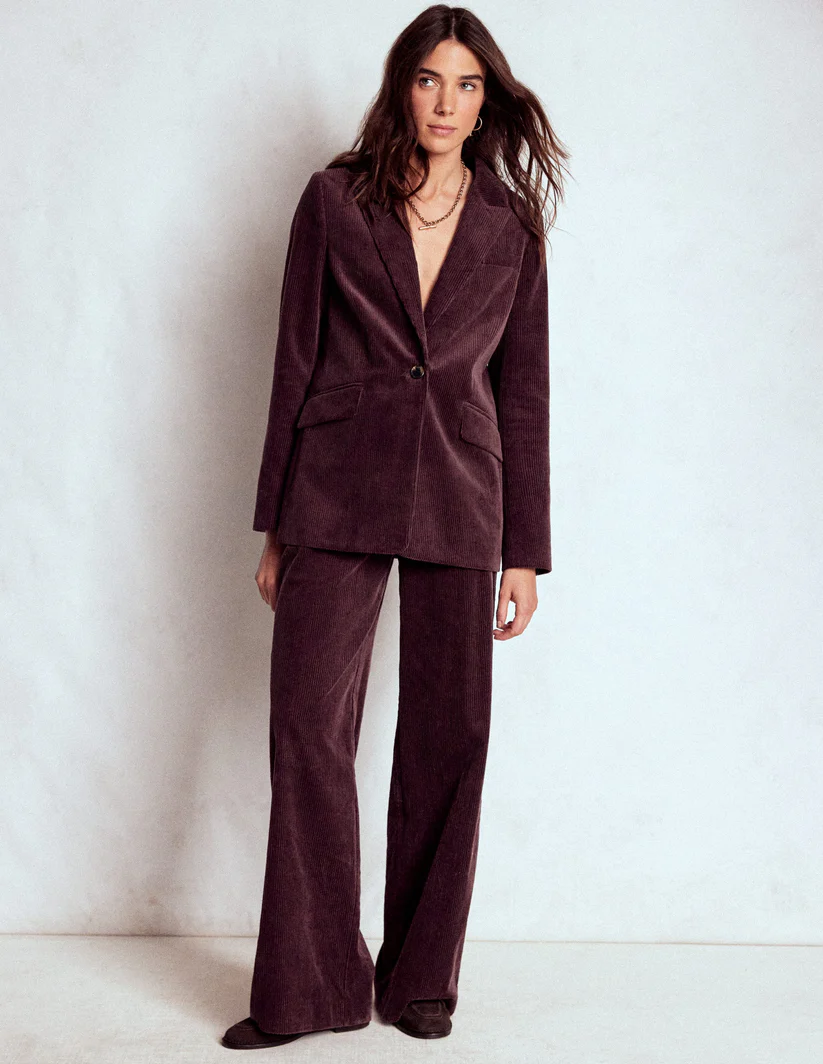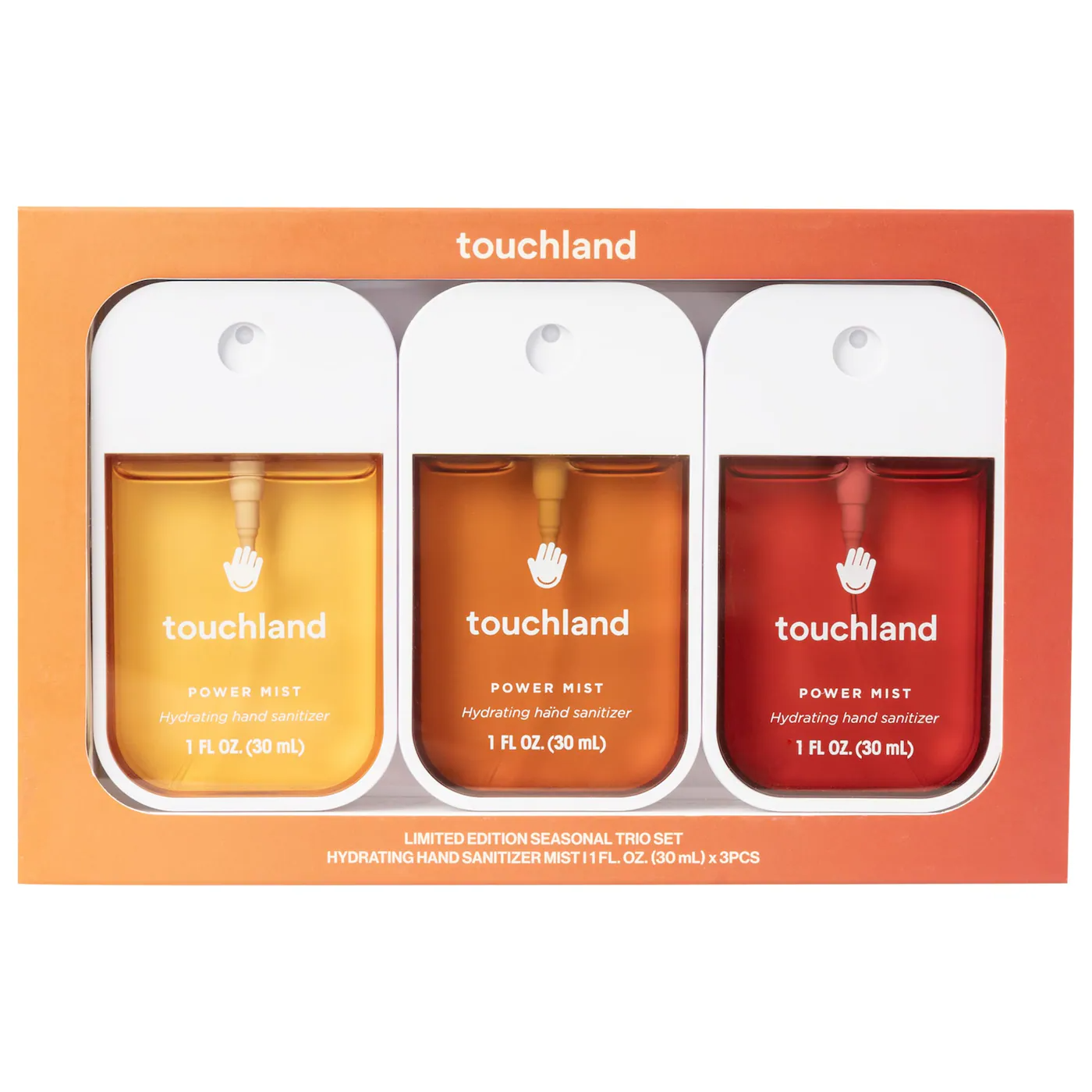

For plus-size women, shopping, in general, is hard. Finding a retailer that sells clothing in a plus-size alone isn’t easy — and that’s before even considering personal preference or style. That selection becomes even more limited when it comes to vintage sellers. But like everyone else, plus-size women want to shop vintage too, be it because of the high quality, fair price point, or sustainable nature of the clothing. Unfortunately, as we see shifts in the right direction for new plus-size fashion, a recent trend is setting curvy women up for more disappointment on the vintage front, with online sellers marketing vintage in larger sizes as “oversized” and selling it to straight-size women. You know, women who already have access to whatever fashion items they want.
“Being plus-size means thrifting and never finding shit in your size, just to find out someone named Anna sold an ‘oversize’ sweater from Goodwill for double the price on Depop,” a woman named Kort tweeted in frustration. And why shouldn’t she be frustrated? Ethics surrounding selling a Goodwill find elsewhere for more money aside, fashion already favors thin body types. Matters don’t need to be worsened by that same demographic dipping their hands in the already-limited plus-size vintage/thrift pot for clothing that doesn’t even fit them.
“It’s not ‘oversized’ for everyone,” says Emma Zack, the founder of Berriez, a plus-size vintage store based in Brooklyn. “A shirt that’s a size L on someone who’s a size XS or S may be ‘oversized;’ but for me, a size 1X, that shirt wouldn’t be ‘oversized,’ it would just be too small.” Zack explains that it isn’t the items in question that need to change, but rather the way that they’re advertised to shoppers by some sellers. “Just list the actual size,” she says. “Not only would marketing items as such increase their chance of finding a new home, but it would also create more opportunities for plus-size people to buy from a wider array of vintage stores.”
Lauren Harbury, the founder and owner of Feminist Goods Co., says it isn’t her job to “police” peoples’ styling or buying habits: “Why wouldn’t [women]want to wear something when it’s trendy?” But, like many others, she finds the limited choice of vintage offerings frustrating. She tells Refinery29 that she “legit has one vintage dress,” which she’s been trying to “make fit” for years: “Narrator: it does not, in fact, fit.” Matters could get even worse as fashion continues to pivot away from an emphasis on tailoring and fit and toward a more slouchy and oversized aesthetic. Already, in the last few seasons, blazers have been worn two sizes too big, puddle pants have replaced everything previously cropped, and jeans have been designed specifically to be worn big. And, for straight-size people looking to buy into the oversize trend who can’t afford to, or don’t want to for sustainability reasons, buy new pieces, vintage is an obvious choice. But their actions could be affecting those whose sizes are harder to find.
“There’s this killer vintage Hawaiian shirt store in Honolulu that I went to and was so excited about,” says Harbury. “But the only things I could buy were men’s button-downs — which, don’t get me wrong, I will absolutely buy — but it’s so strange. Plus people have always existed, so what did they wear? Paper bags?”
She is right to ask that question. Has everything been tailored down after decades of female body standards getting smaller and smaller? Probably not. Is there a shortage of plus-size vintage? According to Zack, the answer is again no. “There isn’t a shortage, there just isn’t as much plus-size vintage from the decades prior to 1980,” she explains. “Just as the fashion industry today doesn’t cater to plus-size bodies — although that has been slowly shifting over the past few years — the fashion industry back then also didn’t cater to plus-size bodies.” Zack says that between World War II and 1980, clothing manufacturers largely ignored plus-size consumers, which plays into why vintage items from certain eras are tricky to source in larger sizes. “Most of the vintage I source is from the ‘80s and ‘90s, though, and it’s just as unique, stylish, and irrefutably ‘vintage’ as clothing from earlier decades,” she says.
“Until plus-size people are treated with the same consideration as straight-size people, this cycle will repeat: There will continue to be a lack of plus-size vintage items in traditional vintage stores.”
– Emma Zack,
It is overall bleak. Upon looking for a pair of vintage Levi’s on Depop, I am met with a variety of options, almost all of which are shown on a straight-size model and either fit perfectly or are styled to purposely look baggy à la Kurt Cobain at the ‘93 MTV VMAs. Hardly a result geared toward plus-size women appears. Maybe you’ll see pieces modeled on a size 8 — emphasis on maybe. And this is hardly just an e-commerce issue — or limited to just denim selections. Before the pandemic shuttered businesses, thus ushering us online, I rarely noticed plus-size options in vintage brick-and-mortars, either.
“I think that a lot of owners of vintage shops are inherently fatphobic,” says Jacqueline Whitmore, the owner of Copper Hive Vintage in Salt Lake City, Utah. “They don’t believe in the worth of fat people, which translates into what items they carry, who they chose to be visible in their marketing, and their unwillingness to try to create plus-sizing within their brand or lifestyles.” Zack shares a similar sentiment. “Like traditional retail stores — and the fashion industry in general — the vintage market tends to favor a more petite body type,” she says. “Plus-size vintage, like all of plus-size fashion, is treated as an afterthought, despite it being one of the fastest-growing markets. And until plus-size people are treated with the same consideration as straight-size people, this cycle will repeat: There will continue to be a lack of plus-size vintage items in traditional vintage stores.”
Some plus-size women have given up on sourcing vintage for many items. Instead, in an effort to avoid supporting unethical fast fashion brands, they are taking matters into their own hands literally — by creating vintage-inspired pieces themselves. “As a plus size babe, I’ve been trying to make more vintage inspo pieces that I [would otherwise]have a hard time sourcing in my size,” Whitmore wrote on Instagram. “I dream about day dresses, so why not make them?” Given that as the owner of a vintage store, Whitmore spends her days surrounded by secondhand clothing, she’s more equipped than anyone to find stylish pieces. And yet, even she’s taken to making or adjusting pieces herself in order to wear clothing that works for her body.
Despite women like Zack, Whitmore, and more dedicating their lives to bettering plus-size women’s experience shopping for vintage, curvy women continue to struggle. That’s not going to change overnight. In the meantime, more vintage sellers can make an effort to carry plus-size options, and consumers can avoid thrifting all of what is available in sizes 12 and up and re-selling it using terms like “baggy” or “oversized.” As Whitmore says, “A shop’s wording and photographs are powerful.”
Like what you see? How about some more R29 goodness, right here?
Fashion Needs Plus-SIze Education




